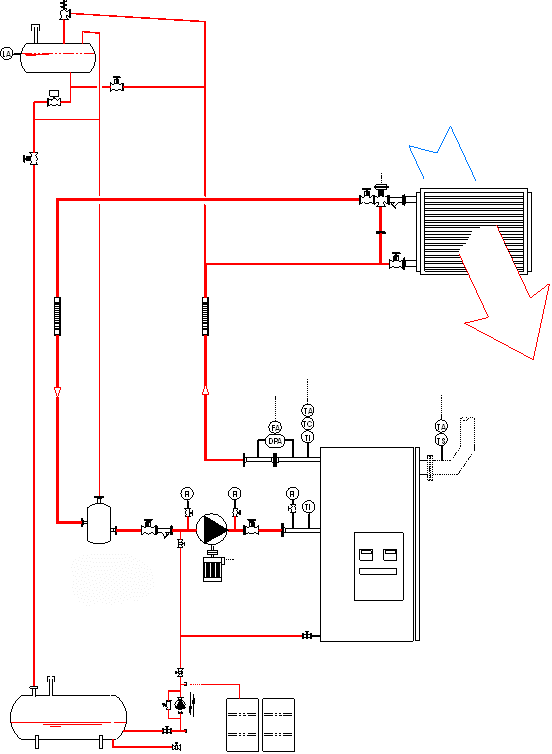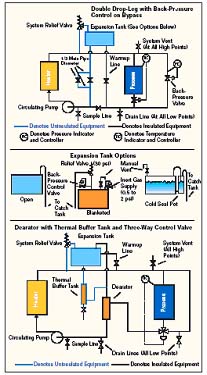This text covers primary information necessary for the design of thermal-fluid systems. Design and Optimization of Thermal Systems Second Edition Mechanical Engineering1pdf.

Elements Of Thermal Fluid System Design By Louis C Burmeister
1 Design of Thermo-Fluids Systems 1 11 Engineering DesignDefinition 1 12 Types of Design in Thermo-Fluid Science 1 13 Difference between Design and Analysis 2 14 Classification of Design 2 15 General Steps in Design 2 16 Abridged Steps in the Design Process 2 2 Air Distribution Systems 5 21 Fluid MechanicsA Brief Review 5.

. Design and optimization of thermal systems Y. It is built from the ground up with the needs and interests of practicing engineers in mind. Design of Fluid Thermal Systems.
Thorough yet concise this text presents the elements of physical system design. Emphasis is placed on the synthesis of. Thermal inductance does not exist Nonlinear variable-coefficient distributed-parameter models Units.
38 EN ISO 6946. Attendance and cooperation 10. 20 Only 3 left in stock more on the way.
Compact enough to leave ample time for design projects it focuses on thermal-fluid systems rather than on components of systems and features a chapter-long example of a major design project with diverse features. The textbook by Stoecker 4 then in the first edition was used. Burmeister 1998 Prentice Hall edition in English.
Scientific observatories Marshall Space Flight Centers thermal and fluid analysis engineers have developed an extensive suite of customized design tools. This book is designed to serve senior-level engineering students taking a capstone design course in fluid and thermal systems design. It is intended for use in a senior-level capstone thermal-fluid system design course in mechanical engineering.
Elements of thermal-fluid system design by Louis C. Provides a compact presentation of design -- focusing on thermal-fluid. Viscous dissipation in the glass.
It is intended for use in a senior-level capstone thermal-fluid system design course in mechanical engineering. Space Transportation Systems Thermal and Fluid Systems From State-of-the-Art to Standard Practice At-A-Glance. Elements of Thermal-Fluid System Design by Louis Burmeister 9780136602187 available at Book Depository with free delivery worldwide.
Up to 24 cash back Elements of thermal-fluid system design Thermal fluid systems are heating systems in which the thermal fluid such as glycol or thermal oil is heated and then recirculated supplying indirect heat to process equipment materials and systems. Provides a compact presentation of design -- focusing on thermal-fluid systems -- to allow ample time to be devoted to a major design project. Design of Thermal Systems 21.
It was the only. From decades of experience on launch vehicles space systems and complex. A fully comprehensive guide to thermal systems designcovering fluid dynamics thermodynamics heat transfer andthermodynamic power cycles Bridging the gap between the fundamental concepts of fluidmechanics heat transfer and thermodynamics and the practicaldesign of thermo-fluids components and systems this textbookfocuses on the design of internal fluid.
Elements of Thermal-Fluid System Design Author. A fully comprehensive guide to thermal systems design covering fluid dynamics thermodynamics heat transfer and thermodynamic power cycles Bridging the gap between the fundamental concepts of fluid mechanics heat transfer and thermodynamics and the practical design of thermo-fluids components and systems this textbook focuses on the design of. Thermal Systems Thermal Systems.
To support the thermal-fluid system design project that was the centerpiece of the course it was found to be necessary to devote 40 of the course to adding to the information acquired by undergraduates in foregoing courses. The emphasis is on practical. Energy is stored and transferred as heat Exhibit static and dynamic behavior resistance capacitance time constants.
Emphasis is placed on the synthesis of components into a thermal-fluid system. Introduction to Thermal System Design The design of thermal systems requires an integrated approach that treats thermodynamics fluid mechanics and heat transfer as parts of one interconnected area in which appropriate solutions to real-life design and analysis problems can. 8250 Published by Pearson Education.
Elements of thermal fluid systems design L. Up to 5 cash back This text covers primary information necessary for the design of thermal-fluid systems. Synthesis and sizing of a system to solve a major design problem is permitted by the texts format.
This book includes an introductory chapter on stimulating the design process organizing and managing a. A fully comprehensive guide to thermal systems designcovering fluid dynamics thermodynamics heat transfer andthermodynamic power cycles Bridging the gap between the fundamental concepts of fluidmechanics heat transfer and thermodynamics and the practicaldesign of thermo-fluids components and systems this textbookfocuses on the design of internal fluid. Synthesis and sizing of a system to solve a major design problem is permitted by the texts format.
Temperature T 0C K F R Heat flow rate Q Js BTUhr Thermal effects Conduction. 1- Revision of all related basics. Building components and building elements thermal resistance and.
The preform fi ber depends on the combined radiation and convection including. Because they supply indirect heat thermal fluid systems minimize the risk of burns or heat damage to. The effect of variations in convection coefficients on thermal energy storage in buildings Part I Interior Partition Walls.
Energy and Building 1986 9 pp.

Pdf A Techincal Report On Design Of Hot Oil System

Pdf Safety In Design Of Thermal Fluid Heat Transfer Systems Semantic Scholar

Pdf Safety In Design Of Thermal Fluid Heat Transfer Systems Semantic Scholar

Thermal Fluid Heating System In Customised Design

Pdf A Techincal Report On Design Of Hot Oil System

Maximize Your Thermal Fluid Heating System

Thermal Expansion Tank Design And Operation 2014 06 02 Process Heating
0 comments
Post a Comment